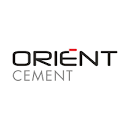
Established in 1979, Orient Cement was formerly , a part of Orient Paper and Industries. It was demerged in the year 2012 and since then, it has emerged as one of the fastest growing and leading cement manufacturers in India. Orient Cement began cement production in the year 1982 at Devpur in Adilabad District, Telangana. In 1997, a split-grinding unit was added at Nashirabad in Jalgaon, Maharashtra . In 2015, Orient Cement started commercial production at its integrated cement plant located at chittapur, Gulbarga , Karnataka. With a total capacity of 8MTPA, they serve Maharashtra, Telangana, Andhra Pradesh, Karnataka and parts of Madhya Pradesh, Tamil Nadu, Kerala, Gujarat and Chattisgarh. The product mix includes Pozzalana Portland Cement(PPC) & Ordinary Portland Cement (OPC) marketed under the brand Birla.A1- Birla.A1 premium cement and recently launched Birla.A1 strongCrete. With focus on resilience and durability , the company has created benchmarks in the industry with quality of its products. Orient Cement is one of the only two Indian cement companies to be awarded the prestigious TPM (Total Plant Maintenance) excellence award by the Japan Institute of Plant Maintenance. The company has also received numerous awards for green and safety practices including GreenPro certification by CII- Green products and services council for its product Birla.A1 Premium Cement (PPC). The Indian Cement Industry is the second largest market after China. It has a total cement production capacity of about 502 million tonnes (MT) . Cement is a cyclical commodity with a high correlation with GDP. The housing and real estate sector is the biggest demand driver of cement, accounting for about 65% of the total consumption in India. The other major consumer of cement include public infrastructure at 20% and industrial development at 15%. Cement demand is expected to reach around 500 million tonnes per annum by 2024 supported by pick up in the housing segment and higher infrastructure spending . Moreover , the per capita consumption of cement in India still remains substantially low at less than 200 kg when compared with the world average which stands at about 500 kg. In case of China , it is over 1000 kg per head. This underlines the tremendous scope for growth in the cement industries in the long term. Higher government spending on infrastructure and housing , and rising per capita income will be key growth drivers for the cement industry . From long term point of view , overall pick-up observed in the infrastructure spending by the government and downward trend in the interest rates is expected to revive the demand across sector. The 7th pay commission is expected to aid in housing demand. Government thrust on affordable housing for realizing its vision of “Housing for All” by 2022 and smart city program should also help in demand growth for cement. The government has given a push through the budget for construction of cement concrete roads, highways, through its unique bharatmala project, construction of rural road under the Pradhan Mantri Gram Sadak Yojana, Pradhan Mantri Awaz Yojana Housing for All, metro rail network in several cities, bullet train, etc will augur well for the cement industry in medium term. The cement sector will drastically change with stand –alone bags giving way to ready to mix concrete (RMC) . The form of RMC will be trailor made concrete customized to suit various infrastructure needs. Ready mix concrete is still a relatively nascent market in India. However , it is slowly but steadily gaining ground and will be sought after product in sector. The greatest advantage of RMC is that it is economical, stronger, and environment friendly. Moreover , no large storage of cement bags is required and there will be no wastage. In the next 10 years , India will become the main exporter of clinker and gray cement to Middle East, Africa and other developing nations of the world. By 2030 India will be most populous nation and its third largest economy. In a little over a decade, the country will undergo a unique and unprecedented transformation. The huge challenges brought about by this rapid pace of development will place a heavy responsibilities in the shoulders of the Indian cement industry. To rise to this opportunity and cement its position as the leading partner for building a new India the industry will go beyond business as usual. It will need to adopt a new shared vision for the industry and work with the entire ecosystem to build more, build well and build right. Whilst the Indian cement industry has abundant potential , it has not been able to realize this in the recent past due to subdue demand and overcapacity which has slowed revenue growth and kept a cap on price rise. The effect of this along with rising cost has been to shrink EBTIDA/Ton. Five major factor have contributed to industry not realising its potential till date: a sharp slowdown in real estate construction, low industrial investment, bans on sand mining, the impact of major policy changes including demonetization, RERA and GST and effect of rising input cost. As a result of these challenges, cement demand growth has struggled to get above 4% and industry-wide capacity utilization stands at just 70%. Despite recent challenges , the Indian cement industry can look forward to a bright future. Cement demand in India will increase by 116% by 2030 to around 720 million metric tonnes at a CAGR of 6.6%. The future growth will be driven by increased infrastructure spending , as its share of cement demand rises from 22% today to around 34% in 2030. Demand for cement from infrastructure will grow at around 10% through to 2030 with the fastest growing coming from the government’s ambitious Sagarmala programme. At the same time , roads will remain biggest single source of cemet demand from infrastructure as a result of implementation of bharatmala programme and increasing adaptation of concrete roads. Housing’s demand for cement will continue to rise at close to 6% per annum. Government’s major push on housing for all will stimulate near term growth, particularly in rural areas. To meet the future demand for cement in 2030 the Indian cement industry will need to invest in additional capacity. This will not only require setting up new plants but also acquiring land, securing raw material supplies and hiring additional talent. The cement industry also need to promote new applications of cement like concrete roads and AAC blocks that will not only stimulate cement demand but also deliver superior performance to existing alternatives. There is a need to accelerate the positive steps already taken in infrastructure development . while road construction has accelerated under bharatmala initiative and ambitious sagarmala programme is underway, India still suffers from a large and persistent infrastructure deficit that require $4.5 trillion investment by 2040. To illustrate this point, India’s infrastructure to GDP ratio remain around 5.8% while China has consistently invested at levels above 8%. India was largest importer of cement from Pakistan . Around 1.5 million tonnes of cement was imported. Now 200 % duty is imposed by Indian government on all goods coming to India from Pakistan. This will be highly benefit to cement Industry . since 200% duty have creates certain shortage of cement in India so Indian cement companies have increased the rate of cement by Rs 40 per bag . This will help to increase revenue of cement companies without increasing their capacities. To meet the growing demand Orient cement plans to invest Rs3,600 crore over the next 5 years to expand its existing cement making capacity to 15 million tonnes per annum from the current 8mpta. The has applied for environmental clearance to expand clinker and grinding capacities in Devapur ( Telangana) and chittapur (Karnataka). The company also wants to set up additional grinding capacity in the eastern market, possibly in Orissa. On standalone bases company’s income from operation grew to Rs 2522.17 cr in March 2019 from Rs 1484.40 cr in March 2013. In last six year company posted a loss only one time in year 2017 of Rs 32.10 crore. Quarterly net sales at Rs 750.81 crore in March 2019 up 21.15% from Rs 619.74 cr in March 2018. Quarterly Net profit at Rs 61.99 crore in March 2019 up 383.79% from Rs 12.81 crore in March 2018. EBITDA stands at Rs 157.06 cr in March 2019 up 101.46% from Rs 77.96 cr in March 2018. Orient Cement EPS has increased to Rs 3.03 in March 2019 from Rs 0.63 in March 2018. Company has a total debt of Rs 1,230.78 cr. By all this I prefer buy call on Orient Cement

